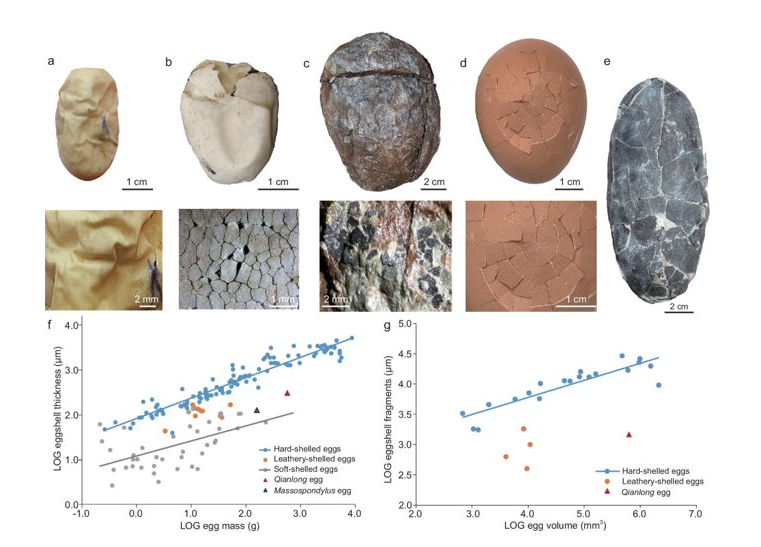Eggs come in all shapes and sizes, from brightly colored to those in large clutches, and everything in between. While most eggs are smooth and fragile, dinosaur eggs might not have been quite the same. Research suggests that dinosaur eggs, like some modern reptile eggs, might have been leathery and more fabric-like to the touch.
Three adult skeletons and five clutches of embryo-containing eggs were discovered in Guizhou Province, China. The adults represent a new species of sauropodomorph dinosaur from the Early Jurassic, roughly 180 to 200 million years ago. These skeletons are unusual as they possess features that are not typically seen in other sauropodomorphs. The most important of these features is large, leathery eggs.
Most of what is understood about dinosaur reproduction and dinosaur eggs comes from deposits found in the Cretaceous system. This has led researchers to wonder if there are fewer dinosaur eggs from the pre-Cretaceous periods because the eggs were leathery and thus less able to fossilize, or whether this is simply an artifact of that period.
The new sauropodomorph has been named Qianlong shouhu. “Qian” is for the region the fossils were collected in, while “long” means dragon and “shouhu” means guarding in Chinese, because the fossils of the eggs and adults were found together.
The team looked closely at the eggs and the embryos within. The way the embryos are arranged within the eggs suggests that they were almost fully developed, as there was limited space left within the eggs. The way animals are arranged in eggs before they hatch is unique to different animal groups; these embryos had a prehatching posture somewhere between what is normally known for crocodilians and birds, with their heads near the top of the egg and their hindlimbs semi-crouched – which is crocodile-like – but the hips of the embryos near the middle of the egg, which is bird-like.
Comparisons between the thicknesses of the calcareous eggshell layer are also interesting. The eggs have a much thicker shell than all the other known early-diverging sauropodomorphs, even thicker than all known soft-shelled eggs, but a lot thinner than most non-avian dinosaur eggs.
This, coupled with other evidence such as the thin eggshell compared to their size, and the wrinkled eggshell surface, supports the idea that Q. shouhu had leathery eggshells rather than hard ones, and suggests that other early diverging sauropodomorphs did too.

Comparison between a) snake, b) turtle, c) Quianlong shouhu d) Chicken and e) Elongatoolithus magnus eggs.
The team concluded that the first dinosaurs had leathery eggshells rather than hard fragile ones, and that they were relatively small and oval-shaped. The change to hard eggshells is likely to have happened during theropod evolution.
The study is published in the journal National Science Review.
Source Link: Early Jurassic Dinosaurs May Have Laid Eggs Leathery To The Touch